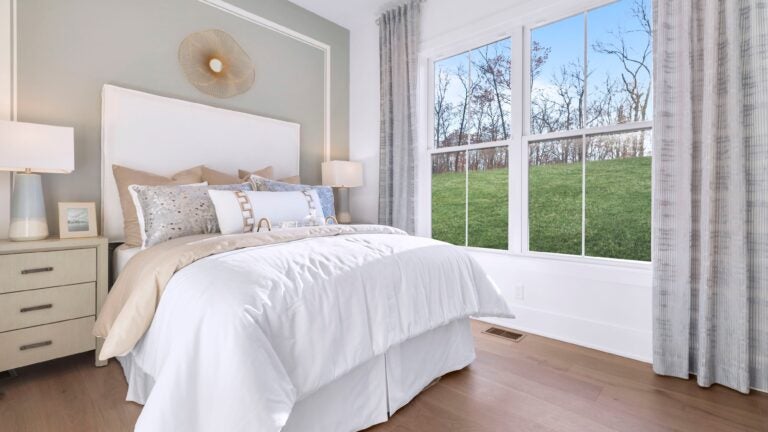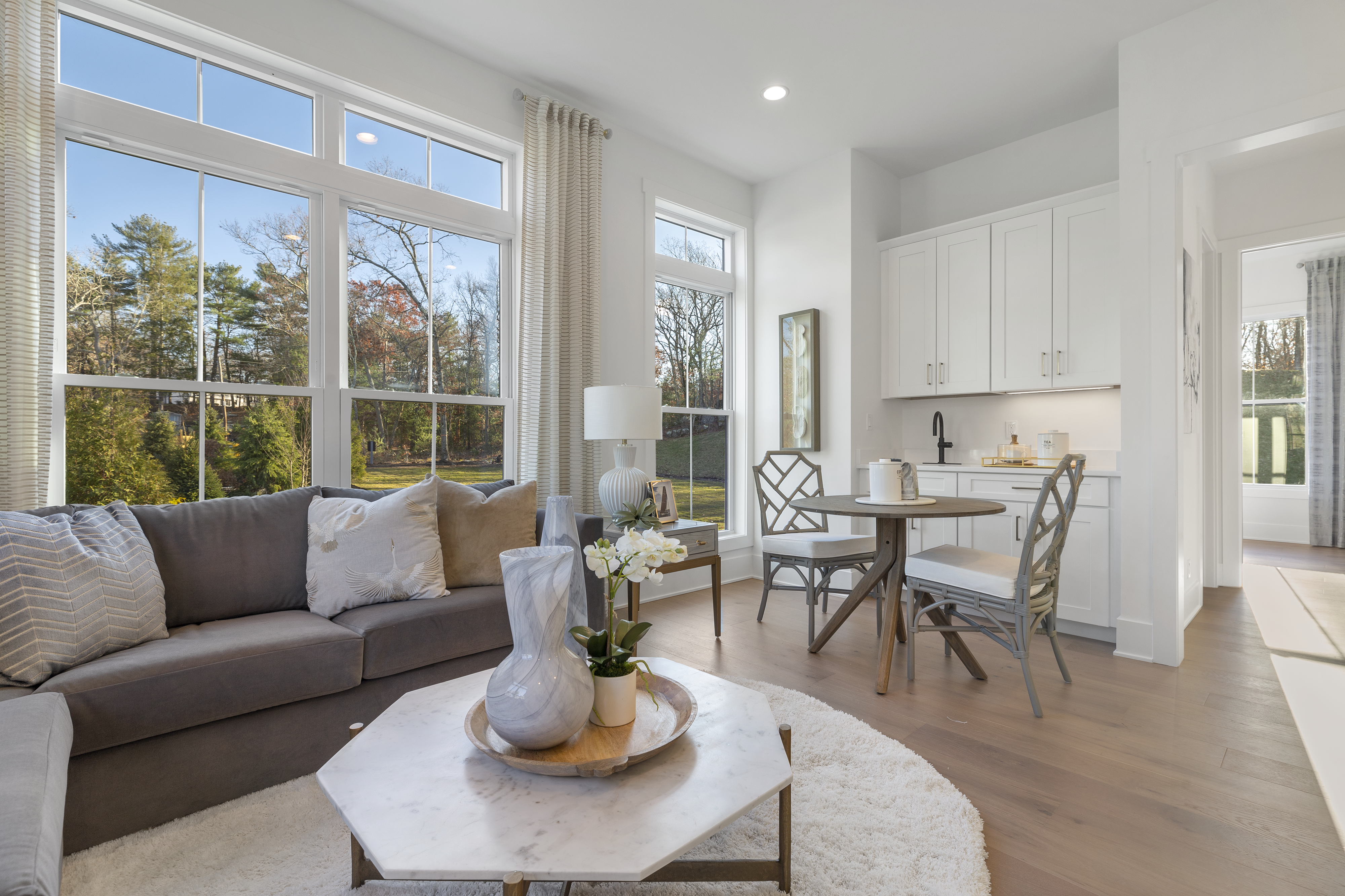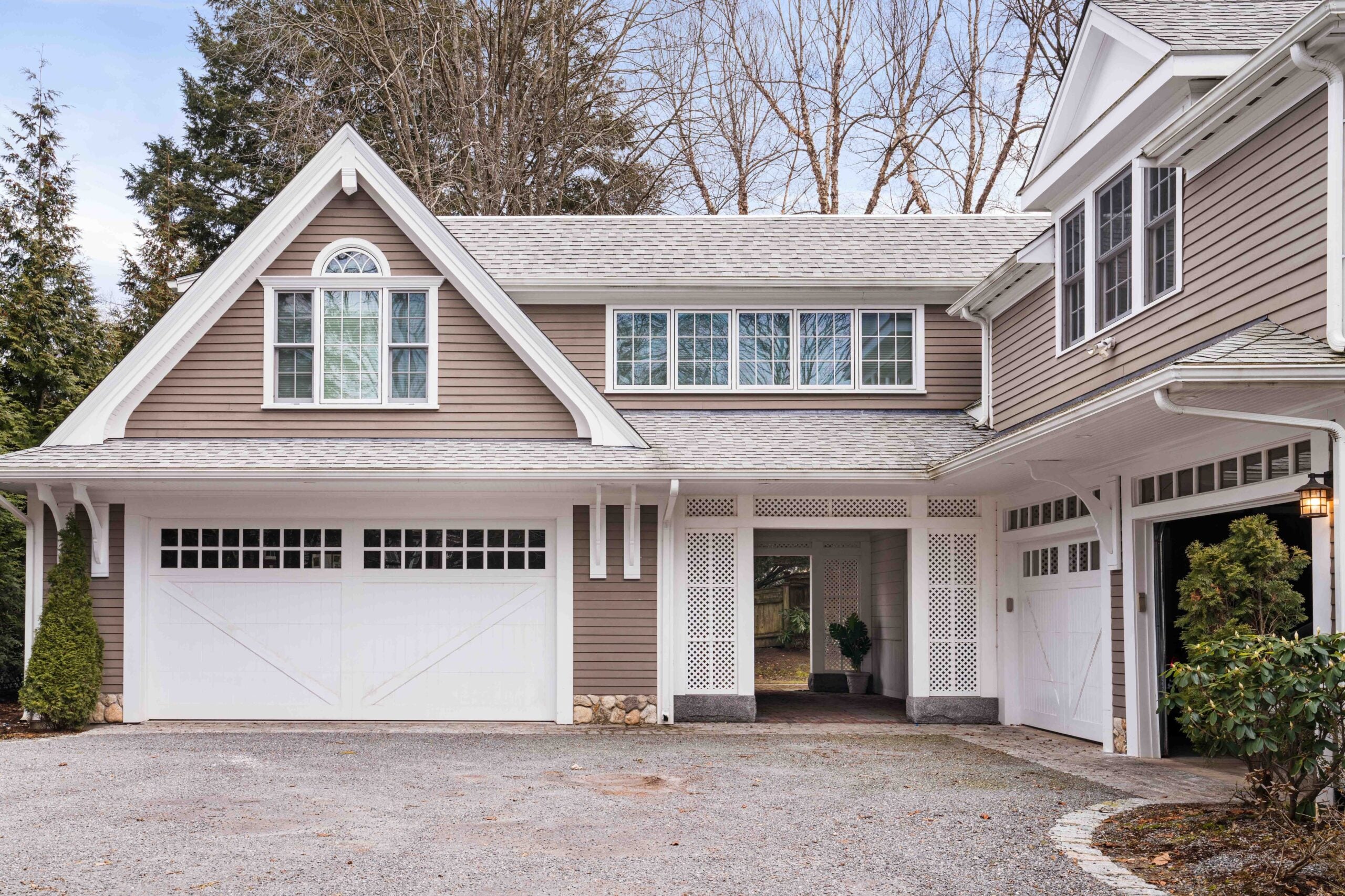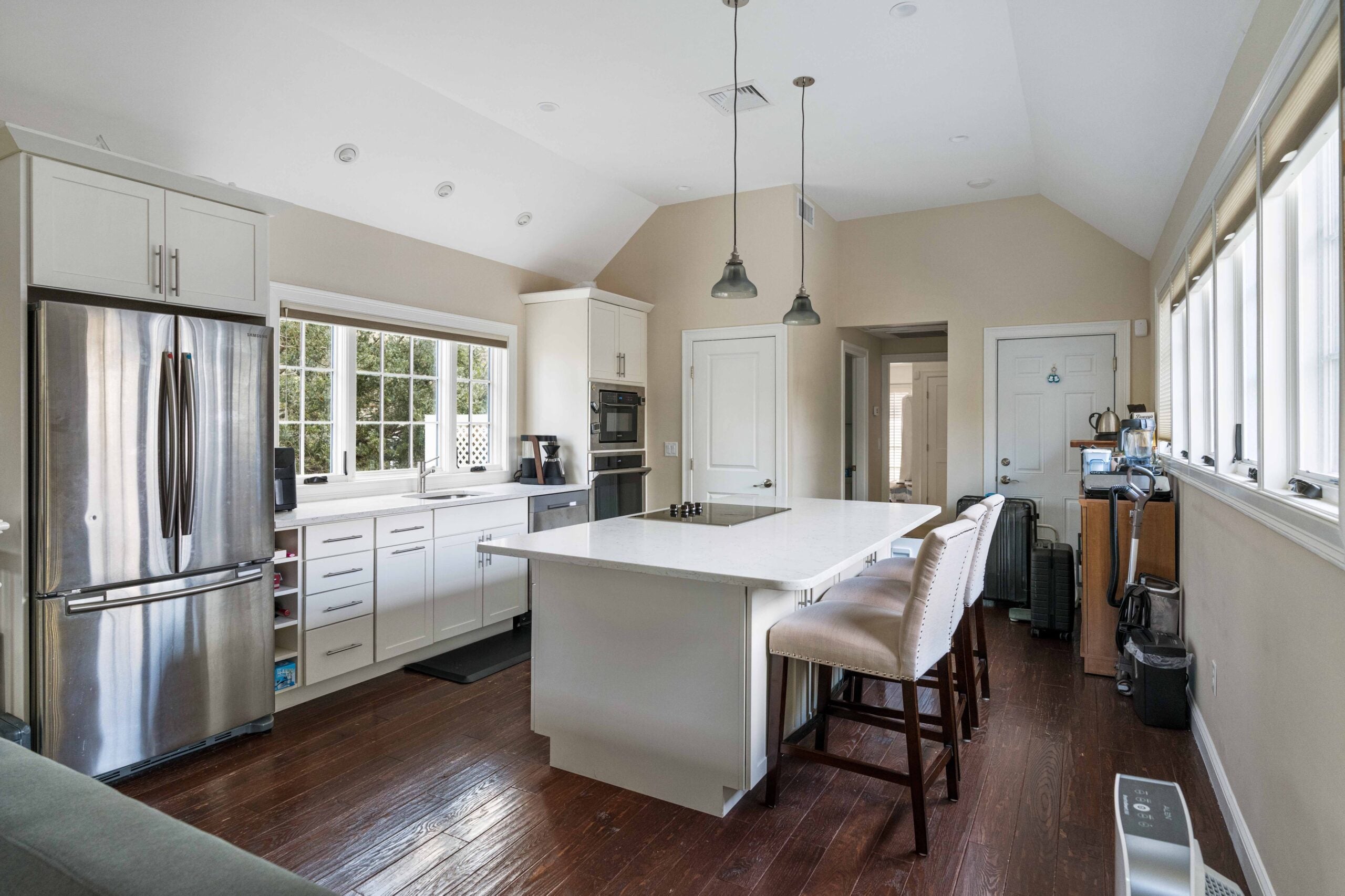Spring House Hunt
From 1971 to 2021, the number of people living in multigenerational households quadrupled. High housing prices and demographic trends are driving the change.

Areej El-Jawahri shares her Hopkinton home with her 67-year-old parents. But she never feels crowded. That’s because she lives in a house specially designed by Fort Washington, Pa.-based luxury home builder Toll Brothers Inc. to fit the needs of multigenerational residents.
When El-Jawahri, a medical oncologist at Massachusetts General Hospital in Boston, signed the contract to purchase the home, she knew she wanted her parents, who then lived in Michigan, to join her.
“I wanted them to be in a state where I could help manage their health care needs,” she said. “As an only child from a Middle Eastern background, our culture is all about family units, so the idea of being closer to family is really important to me. And I get to eat my mom’s cooking every day.”
Now the three share a 4,400-square-foot home on 1.38 acres, with five bedrooms, six baths, and a custom-designed suite in the rear of the home for El-Jawahri’s folks, who enjoy two bedrooms (one of which is used as a living room), a full bathroom, and a walk-in closet. The cost of adding the customized multigenerational suite to the home, which had a base price of $1.7 million, was $95,000.
Whether it’s aging parents moving in with their kids or college graduates returning to the fold because they can’t afford to buy or rent in Greater Boston, statistics show that more people are living in multigenerational households.
A Pew Research Center analysis released in March 2022 found that multigenerational living has grown steadily in the United States since the 1970s. From 1971 to 2021, the number of people living in multigenerational households quadrupled, Pew reported, with the share of the US population in these homes more than doubling, from 7 percent in 1971 to 18 percent in 2021.
“We’ve always had some level of interest in multigenerational living, but over the last few years, we’re seeing a significant uptick, and there are so many different variations of that interest,” said Dave Bauer, Toll’s division president for Massachusetts, Connecticut, and New York. “It could be preparing for the boomerang child to come back or planning ahead for the future, maybe using the space as a playroom in preparation for moving in aging parents someday.”
Bauer said that almost any single-family model Toll builds in Massachusetts can be customized to allow for multigenerational living. The cost to add a multigenerational living suite runs about $25,000 to $75,000 on average, he said, and buyers can invest further with personalized fixtures and finishes.

“Rents in Boston are so exorbitant that I see a lot of post-college-age people moving back in with their parents,” said Connie Brown, a global real estate adviser at Gibson Sotheby’s International Realty in Charlestown. “I have a rental apartment now that’s $5,000 a month, and we take the first month’s rent, last month, security deposit, and our broker’s fee, so it’s $20,000 just to walk into the door.”
One of Brown’s clients, Brian Lash, an entrepreneur, owns a 7,022-square-foot contemporary estate in Chestnut Hill that’s listed for $9.9 million. Lash renovated the property multiple times after purchasing it for $718,000 in 1997, and in 2021 he converted space over the garage to an apartment for his 92-year-old dad. “It’s a lovely one-bedroom apartment, about 900 square feet with a Romeo and Juliet balcony,” Lash said.
While his father did move in, he missed his friends and poker game in Florida and moved out after a few months. Lash now rents the apartment for $4,000 a month.
“Living with my dad for those three months was wonderful,” he said, noting that his father has since passed away. “We watched basketball, baseball, and golf, we went out for dinner, and I cooked for him. Those are days I never would have had if I didn’t build that apartment.”


Buyers interested in a multigenerational home should start shopping as early as possible due to limited inventory and strong demand for these properties. “Everyone who has seen it or asked to see it has expressed that they want an additional apartment or accessory dwelling unit, which makes the property more attractive to them,” Brown said of her listing in Chestnut Hill.
Buyers also should expect to pay more for homes suitable for multiple generations. According to Realtor.com, nationally, about 2.8 percent of homes listed between Jan. 1 and March 14, 2024 have advertised an additional dwelling unit, in-law suite, or back house in the listing description, and homes featuring one of these additional dwelling units had median listing prices almost 25 percent higher than the market median.
Multigenerational homes offer residents multiple advantages: shared expenses and homeowner responsibilities, stronger family relationships, and peace of mind knowing that aging or ailing family members are safe. Younger homeowners living with their parents may even find they have built-in child care.
Still, Benjamin Aiken, a senior real estate adviser at The Agency in Boston, encourages the parties to have an “open conversation” about their expectations before they move in together. “Talk about whether there are shared expenses, who is responsible for what, and who gets the tax benefits,” he said. “At some point, someone may outgrow that space, so make sure you have an exit strategy.”
Real estate attorney Hillery Dorner, with Dorner Law & Title Services PC in Concord, advises clients to go a step further. “I suggest that people who live together talk about their expectations and wishes in regard to sharing a home, and if they are not married, that they put in writing what their agreement is,” she said. “We often do cohabitation agreements between couples or friends, and we do them less frequently for multigenerational families, but I think it’s just as important. Putting it in writing at the beginning of the process enables people to understand perspectives — and sometimes allows them to decide not to move in together.”
Robyn A. Friedman has been writing about real estate and the home market for more than two decades. Follow her @robynafriedman. Send comments to [email protected].
Address newsletter
Get the latest news on buying, selling, renting, home design, and more.






